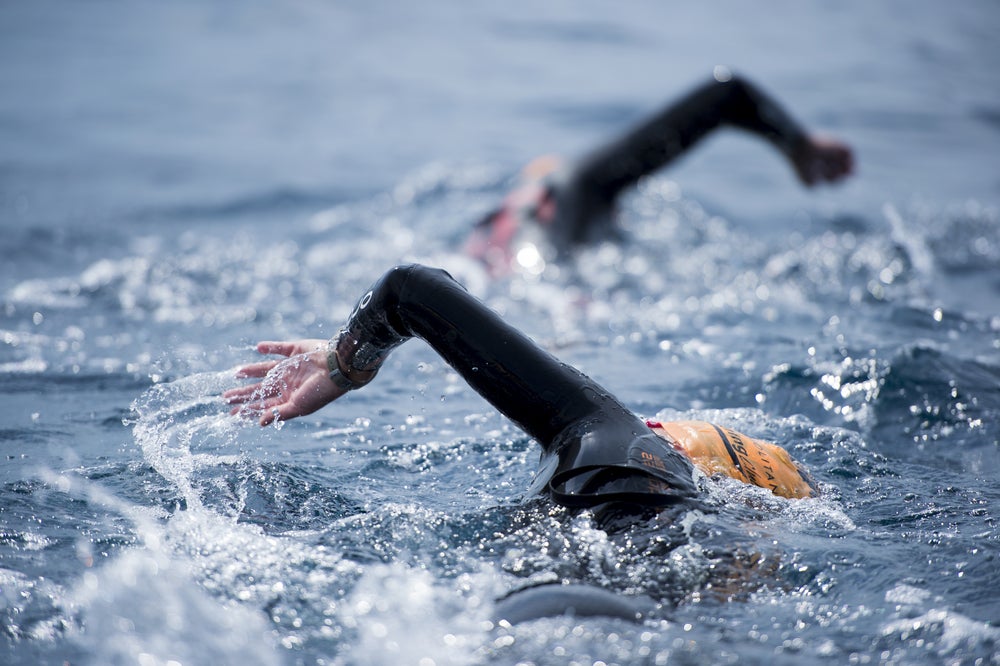Ask Coach Sara: Sleeved Versus Sleeveless Wetsuits

Photo: <a href=http://shutterstock.com>Shutterstock.com</a>
Your questions about swimming as a triathlete, answered by coach and professional triathlete Sara McLarty.
Q: How much speed do I have to gain going from a sleeveless to a sleeved wetsuit? –@TrISam2
A: Blueseventy brand manager Mike Orton says, based on the company’s testing, you definitely gain speed by going to a full suit. “The more skin you can cover with coated neoprene (a slicker surface that moves through the water faster), the better,” he says. “It also provides a smooth seal around the arm and armpit area and adds buoyancy to the swimmer.” This is all dependent on a well-fitting suit, as some muscular athletes are uncomfortable in a full-sleeved suit.
RELATED – 2017 Triathlete Buyer’s Guide: Wetsuits
Q: I get pain in my right wrist when I swim long distances. How do I mitigate this? –@JalpanDave
A: Any long-lasting pain during training should be addressed with a medical professional. If the doctor gives you the OK to keep training, start by reviewing your stroke technique. The easiest way is to watch your arm/wrist as it travels through the stroke. Notice when you are having pain and check your wrist angles in that phase of the stroke. Take an above- and underwater video of yourself, and review it in slow motion to see if you are doing a small movement incorrectly. Finally, have a swimming professional check out your stroke. A trained eye might spot something that you haven’t noticed or didn’t realize was wrong.
RELATED – The Stroke Series Part Two: Pull & Finish
Q: How do I return to swimming after rotator cuff surgery? –@millerbeT
How about training again after hernia surgery? –@ChrisSLawrence
A: The obvious is true here—do not resume exercise after any medical procedure until you have your doctor’s permission, and diligently follow his or her instructions regarding duration and intensity. Once you are given the “all clear,” let pain or discomfort be your guide—if you experience either, stop immediately. Many athletes and non-athletes use the water as their first step toward recovery because it provides a low-impact and high-resistance environment to strengthen atrophied muscles.